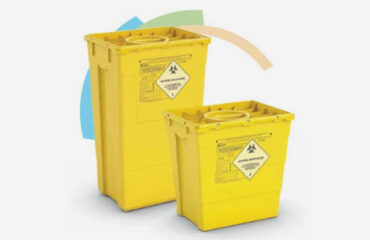The Greatest Guide To Reclaim Waste
Table of ContentsThe Single Strategy To Use For Reclaim WasteA Biased View of Reclaim WasteThe Greatest Guide To Reclaim WasteThe Ultimate Guide To Reclaim WasteEverything about Reclaim Waste
Discover the types, occurrences, and forms of fluid waste. Residential sewer waste refers to the waste and products from a domestic sewage-disposal tank. This type of waste is produced by people in homes, colleges, and other buildings. This only consists of sewage-disposal tanks that have a drain area. The appropriate monitoring and disposal of domestic sewage waste need liquid waste to be moved to a sewer treatment plant where the proper approaches and equipment are related to cleanse and dispose of waste.
Commercial waste often consists of prospective dangers, such as flammable products or a mixture of fluid and solid waste items, and requires a more sophisticated and detailed disposal procedure. The disposal of industrial waste commonly involves the filtering of waste before transportation to guarantee safe and appropriate disposal. Hazardous waste is produced from results and drainage of commercial procedures and manufacturing.
This sort of waste can not utilize the very same sewer administration transport or procedures as septic or commercial fluids. The hazardous waste monitoring process calls for the assessment and testing of fluid waste before it undertakes the disposal procedure (liquid waste disposal). Runoff waste is the liquid waste that comes from drainage and excess stormwater in extremely booming areas or cities
Drainage waste can create contamination and flooding otherwise managed effectively. Find out more regarding sewer cleansing and waste monitoring. Making certain appropriate waste administration can avoid catastrophes and lower ecological harm. Both individuals in residential setups and professionals in industrial or production sectors can benefit from recognizing the processes and laws of fluid waste monitoring.
An Unbiased View of Reclaim Waste
Call PROS Solutions today to discover concerning our waste monitoring and disposal solutions and the proper means to look after the liquid waste you generate.
(https://www.openlearning.com/u/leonaube-smse1x/about/)This so-called 'wastewater' is not only an important source but, after treatment, will certainly be launched to our land, waterways or the ocean. Used water from commodes, showers, baths, cooking area sinks, laundries and commercial processes is known as wastewater.

water made use of to cool down equipment or clean plant and tools). Stormwater, a kind of wastewater, next page is overflow that flows from agricultural and city locations such as roofings, parks, gardens, roadways, courses and seamless gutters into stormwater drains, after rainfall. Stormwater flows neglected straight to local creeks or rivers, ultimately getting to the ocean.
The Definitive Guide to Reclaim Waste
In Queensland, most wastewater is treated at sewage treatment plants. Wastewater is delivered from domestic or industrial websites via a system of sewage systems and pump stations, recognized as sewerage reticulation, to a sewage treatment plant.
The Division of Natural Resources recommends city governments concerning managing, operating and keeping sewerage systems and treatment plants. In unsewered locations, local governments may call for householders to install private or household sewage therapy systems to treat residential wastewater from bathrooms, kitchens, bathrooms and laundries. The Division of Natural Resources authorizes using house systems when they are verified to be reliable.
In some brand-new communities, treatment of some stormwater to get rid of litter, sand and gravel has started making use of gross pollutant traps. Wastewater treatment occurs in four phases: Gets rid of strong issue.
Utilizes tiny living microorganisms knows as micro-organisms to damage down and remove continuing to be liquified wastes and fine bits. Micro-organisms and wastes are included in the sludge.
Fascination About Reclaim Waste
Nutrient elimination is not readily available at all sewage therapy plants because it calls for costly specialised tools. Clear liquid effluent generated after treatment may still contain disease-causing micro-organisms - liquid waste disposal.

A lot of wastewater flows right into the sewerage system. Under the Act, regional governments provide approvals and permits for environmentally pertinent activities (ERAs) entailing wastewater releases that could have a regional impact.
Reclaim Waste for Dummies
Monitoring offers accurate details concerning water top quality and can confirm that licence conditions are being met. The information obtained with tracking supplies the basis for making water high quality choices.